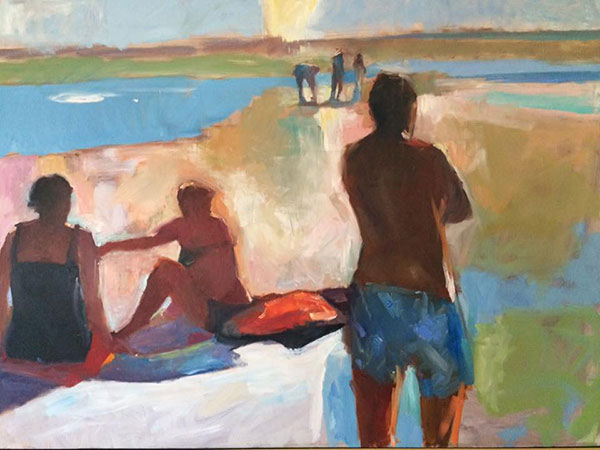– Bob Bahr reporting, Editor PleinAir Today –
Many artists recommend identifying what you first liked about a scene, and staying with that thought through the entire painting. Walter Bartman takes that idea further.
Lead Image: “Sun Stream,” by Walter Bartman, oil, 36 x 48 in.
His painting “Sun Stream” attracted some attention on social media, and when we asked about it, Bartman opened up his world to us. “I really looked at this color orange and its importance, and its relativity to the background, which was a blue color,” he says about the piece. “It’s easy to lose sight of that and go with more colors. But I stick with something like that and make it the focus of a work.”
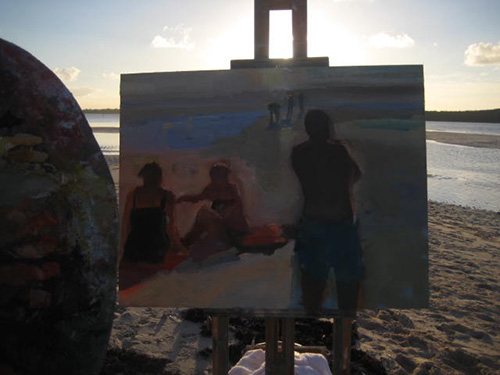
The piece he posted was based on a plein air study. He says some of his field work screams for larger treatment. Bartman relates that he is influenced by Neil Welliver in this regard. “I thought this could be a more powerful painting if it were larger,” he says about the plein air piece inspiring “Sun Stream.” “The small one has more sand in it,” he joked. “When I finished the small one on site, the two women wanted to buy it, and the man wanted to buy it as well.” The man won the bidding war.
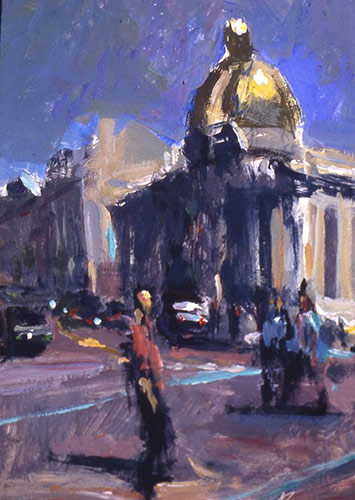
Bartman works fast, in part because he is not working from models, in part because he wants to capture light effects, and in part because it is his nature. “I like looking into the sun, and I appreciate the tension of the light against the figures,” says Bartman. “I’m always thinking about scale and how the figures scale next to each other in paint. Nobody is posing for me, so I’m painting quickly.
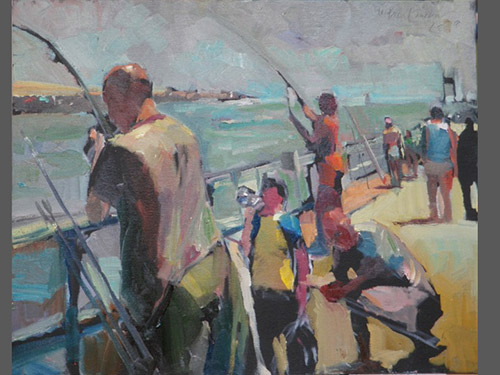
“I really enjoy composing an idea that is changing. That may include the figure, integrating a figure into the landscape. I also do a lot with cows; I live down the street from a dairy farm. I like to be in the situation of something where things are changing. I have to teach all the different approaches where I teach — how to see color, how to capture the figure, how to model, how to glaze. I run the range of things. But my work is immediate, and my strongest pieces are the ones where I am dealing with change. It’s about memory and constructing something, capturing the moment and responding. Capturing the essence — building an idea and refining it.”
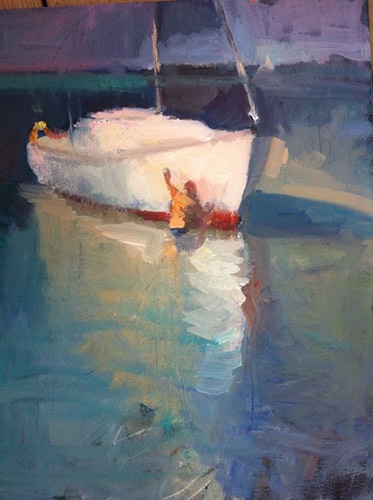
The colors are strong in his work, but Bartman says they are accurate. “Those are colors I was seeing,” says the artist. “I tried to stay as close to the colors as I could. It’s why I paint outdoors; it keeps me in contact with color relationships and the way they fall next to one another.”
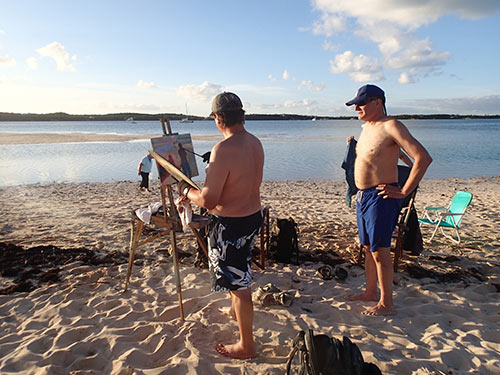
A teacher for more than 40 years, Bartman often preaches the importance of drawing. But he doesn’t always practice what he preaches. “I don’t really draw anything,” he says. “I draw how my eye goes through the space, how my eye is playing with the space. I put down lines that follow the direction of my eye — a zigzag, crisscross lines, up and down in a cross, a sequence — so when I am responding I have an idea of what I’m doing. It comes from experience and how you build an understanding. I wouldn’t have had time to draw ‘Sun Stream’ first,” he points out.
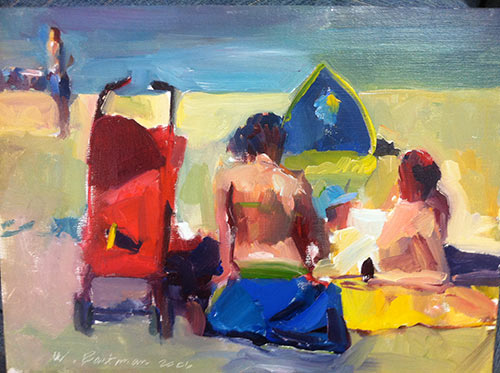
“Paintings capture thoughts,” Bartman says. “I build an image out of an abstract thought and refine it. But if you get an essence, that’s really as far as you need to go with the piece. Go further, and it becomes too conscious and it loses its spontaneity.”

